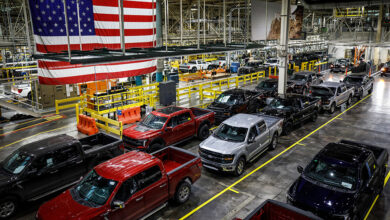Ford Investing Over $5 Billion in New EV Platform, Assembly Process & Battery Manufacturing
New platform enables a family of affordable vehicles to be produced at scale & new simplified vehicle assembly will improve safety, quality & speed…
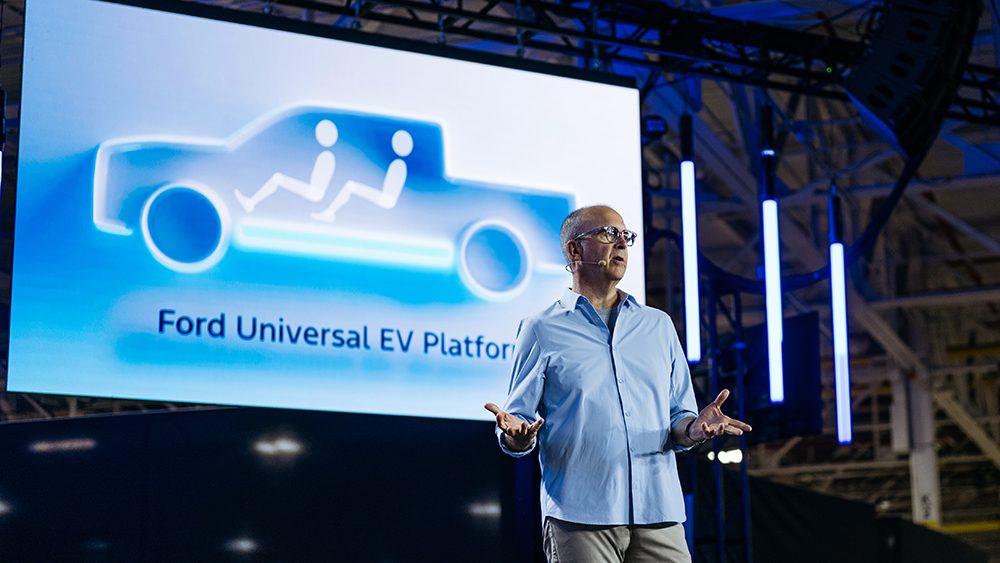
Ford Motor Company is working on bringing a new family of affordable, high-quality electric vehicles within reach for millions around the world, company officials stated in a press release. The company has announced its Ford Universal EV Platform and Ford Universal EV Production System, which were born from a team that combines the expertise and scale of a company with 122 years of experience with the speed, innovation and first-principles thinking of a California-based electric vehicle hardware and software skunkworks team.
The result, according to Ford, is a simple, efficient, flexible ecosystem to deliver a family of affordable, electric, software-defined vehicles, the first of which is a midsize, four-door electric pickup that will be assembled at Ford’s Louisville Assembly Plant for U.S. and export markets. Its launch is scheduled for 2027.
“We took a radical approach to a very hard challenge: Create affordable vehicles that delight customers in every way that matters—design, innovation, flexibility, space, driving pleasure and cost of ownership—and do it with American workers,” said Ford president and CEO Jim Farley.
“We have all lived through far too many ‘good college tries’ by Detroit automakers to make affordable vehicles that ends up with idled plants, layoffs and uncertainty. So, this had to be a strong, sustainable and profitable business. From day one, we knew there was no incremental path to success. We empowered a tiny skunkworks team three time zones away from Detroit. We tore up the moving assembly line concept and designed a better one. And we found a path to be the first automaker to make prismatic LFP batteries in the U.S.”
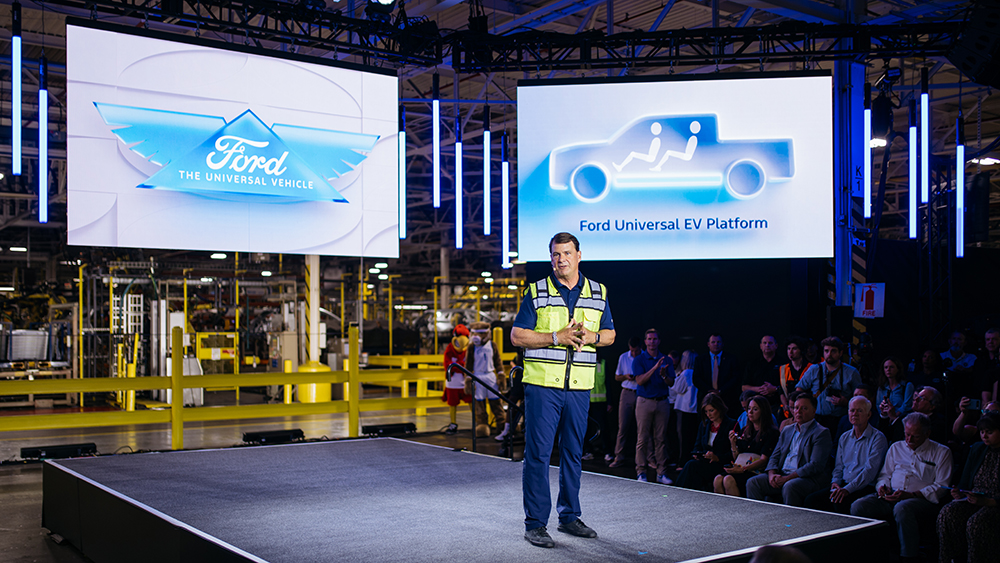
The Ford Universal EV Platform
The numbers tell the story, Farley said. The platform reduces parts by 20% versus a typical vehicle, with 25% fewer fasteners, 40% fewer workstations dock-to-dock in the plant and 15% faster assembly time. Ford also claims the cost of ownership over five years will be less than a three-year-old used Tesla Model Y.
One example that Ford gives is that the wiring harness in the new midsize truck will be more than 4,000 feet shorter and 22 pounds lighter than the one used in its first-gen electric SUV.
Lithium iron phosphate (LFP) prismatic batteries also enable space and weight savings, while delivering cost reduction and durability for customers. The platform’s cobalt-free and nickel-free LFP battery pack is a structural sub-assembly that also serves as the vehicle’s floor. This low center of gravity improves handling, creates a quiet cabin, and provides a surprising amount of interior space, noted the release.
The new midsize truck is forecasted to have more passenger room than the latest Toyota RAV4, even before you include the frunk and the truck bed. According to Ford, owners can lock their surfboards or other gear in that bed—no roof rack or trailer hitch racks required.
Ford says this electric vehicle platform with a low center of gravity from the battery, instant torque from electric motors and obsessive chassis engineering will make it fun to drive. The midsize truck will have a targeted 0-60 time as fast as a Mustang EcoBoost, with more downforce.
“We took inspiration from the Model T, the universal car that changed the world,” said Doug Field, Ford chief EV, digital and design officer. “We assembled a really brilliant collection of minds across Ford and unleashed them to find new solutions to old problems. We applied first‑principles engineering, pushing to the limits of physics to make it fun to drive and compete on affordability. Our new zonal electric architecture unlocks capabilities the industry has never seen. This isn’t a stripped‑down, old‑school vehicle.”
Additional specifications for the midsize electric truck—including reveal date, starting price, EPA-estimated battery range, battery sizes and charge times—will be released at a later date.
The Ford Universal EV Production System
The Ford team says that it obsessed about efficiency in manufacturing, transforming the traditional assembly line into an “assembly tree.” Instead of one long conveyor, three sub-assemblies run down their own lines simultaneously and then join together. Large single-piece aluminum unicastings replace dozens of smaller parts, enabling the front and rear of the vehicle to be assembled separately. The front and rear are then combined with the third sub-assembly, the structural battery, which is independently assembled with seats, consoles and carpeting, to form the vehicle.
Parts travel down the assembly tree to operators in a kit. Within that kit, all fasteners, scanners and power tools required for the job are included and in the correct orientation for use. The Ford Universal EV Production System dramatically improves ergonomics for employees by reducing twisting, reaching and bending, allowing them to focus on the job at hand, company officials added.
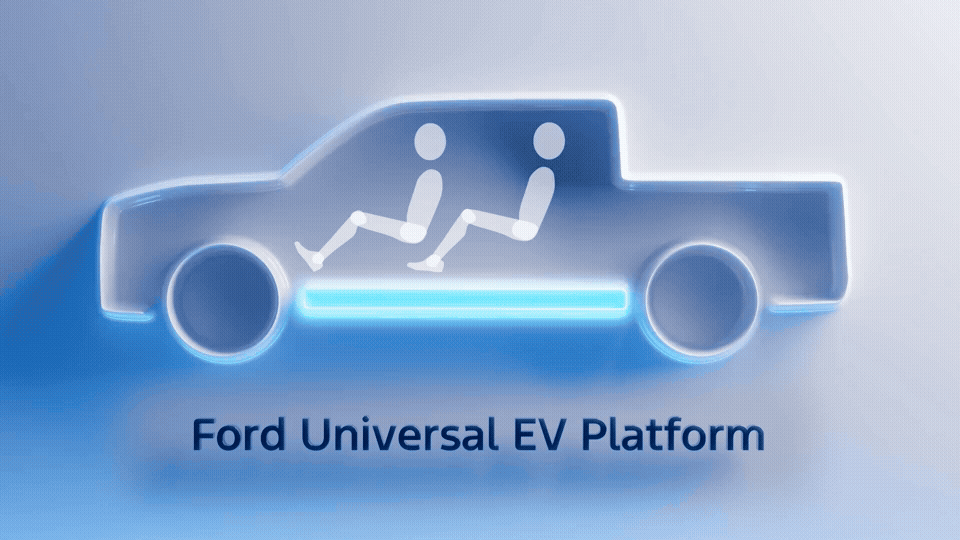
Ford believes that because of the integration between the Ford Universal EV Production System and Platform, assembly of the midsize electric truck could be up to 40% faster than the Louisville Assembly Plant’s current vehicles. Some of that time will be reinvested into insourcing and automation to improve quality and cost, ultimately netting a 15% speed improvement.
“We put our employees at the center and recreated the factory from scratch,” said Bryce Currie, Ford vice president, Americas Manufacturing. “We live and breathe continuous improvement, but sometimes you need a dramatic leap forward. We expect ergonomic breakthroughs and complexity reduction—through elimination of parts, connectors and wire—will flow through to significant quality and cost wins.”
Ford’s Continued Investment in American Manufacturing
Ford plans to invest nearly $2 billion in the Louisville Assembly Plant to assemble the midsize electric truck, securing 2,200 hourly jobs. The project is supported by an incentive offer from the Kentucky Economic Development Finance Authority.
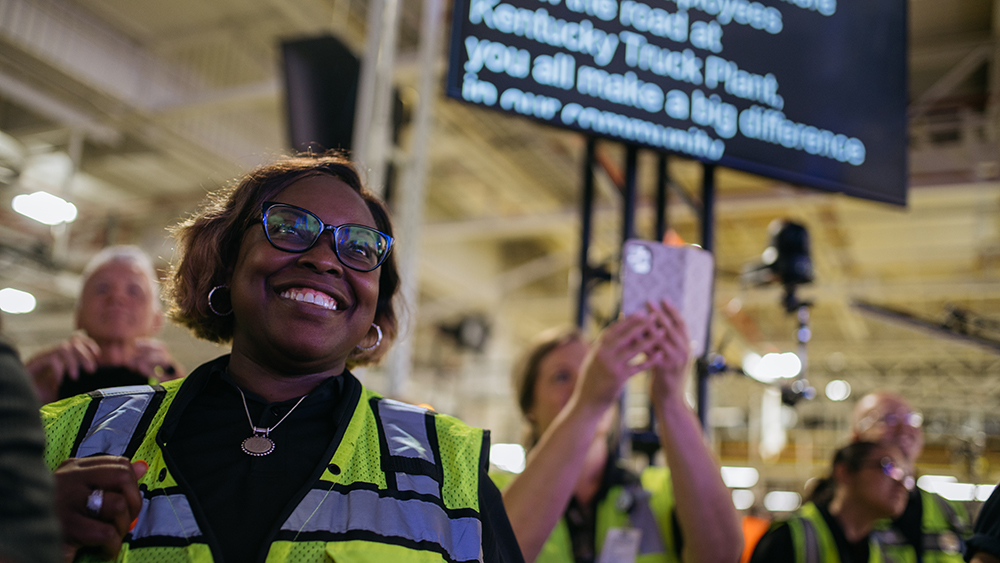
“Today, Ford and Team Kentucky are introducing the world to the future of automotive production with nearly $2 billion being invested to transform the Louisville Assembly Plant, which will also secure 2,200 jobs for Kentuckians,” said Kentucky Governor Andy Beshear. “This announcement not only represents one of the largest investments on record in our state, it also boosts Kentucky’s position at the center of EV-related innovation and solidifies Louisville Assembly Plant as an important part of Ford’s future. Thanks to Ford’s leaders for their continued faith in Kentucky and our incredible workforce. Ford and Kentucky have been a tremendous team for more than 100 years, and that partnership has never been stronger than it is today.”
The Louisville Assembly Plant will expand by 52,000 square feet in order to move material more efficiently. Ford stated that the digital infrastructure upgrades will give the Louisville Assembly Plant the fastest network with the most access points out of any Ford plant globally, enabling more quality scans.
Ford’s investment in the Louisville Assembly Plant is in addition to its previously announced $3 billion investment in BlueOval Battery Park Michigan, which will build the prismatic LFP batteries for the midsize electric truck starting next year. Together, the investments total approximately $5 billion, and between the two plants, Ford expects to create or secure nearly 4,000 direct jobs while strengthening the domestic supply chain with dozens of new U.S.-based suppliers.


